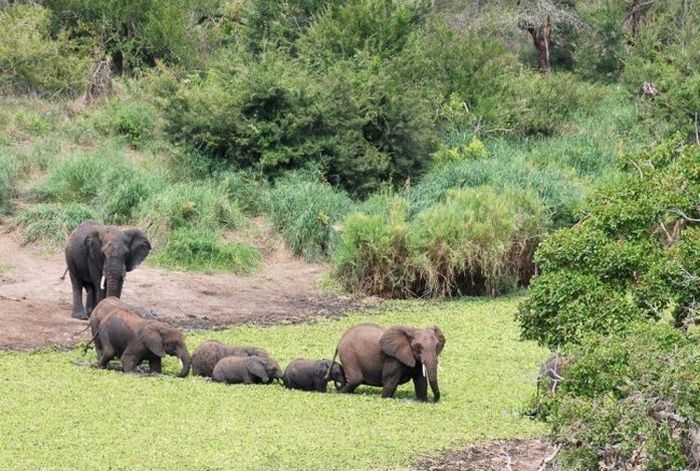|
|
Baby Elephant And His Trunk
|
Elephants can communicate over long distances by producing and receiving low-frequency sound (infrasound), a sub-sonic rumbling, which can travel in the air and through the ground much farther than higher frequencies. These calls range in frequency from 15–35 Hz and can be as loud as 117 dB, allowing communication for many kilometres, with a possible maximum range of around 10 km. This sound can be felt by the sensitive skin of an elephant's feet and trunk, which pick up the resonant vibrations much as the flat skin on the head of a drum. To listen attentively, every member of the herd will lift one foreleg from the ground, and face the source of the sound, or often lay its trunk on the ground. The lifting presumably increases the ground contact and sensitivity of the remaining legs. This ability is thought also to aid their navigation by use of external sources of infrasound. Discovery of this new aspect of elephant social communication and perception came with breakthroughs in audio technology, which can pick up frequencies outside the range of the human ear. Pioneering research in elephant infrasound communication was done by Katy Payne, of the Elephant Listening Project, and is detailed in her book Silent Thunder. Though this research is still in its infancy, it is helping to solve many mysteries, such as how elephants can find distant potential mates, and how social groups are able to coordinate their movements over extensive range. Joyce Poole has also begun decoding elephant utterances that have been recorded over many years of observation, hoping to create a lexicon based on a systematic catalogue of elephant sounds.
Diet
Elephants are herbivores, and spend up to 16 hours a day eating plants. Their diets are highly variable, both seasonally and across habitats and regions. Elephants are primarily browsers, feeding on the leaves, bark, and fruits of trees and shrubs, but they may also eat considerable grasses and herbs. As is true for other nonruminant unglulates, elephants only digest approximately 40% of what they eat. They make up for their digestive systems' lack of efficiency in volume. An adult elephant consumes 140–270 kg (300–600 lb) of food a day.
|
|









